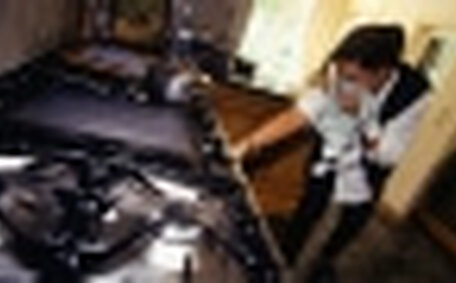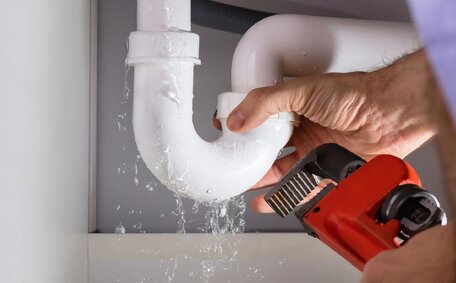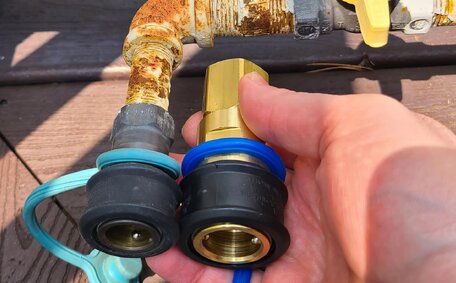Introduction to Hot Water System Settings
Having the right hot water system settings for your home is crucial. The temperature of your hot water can impact energy efficiency, prevent bacteria growth, and most importantly, safety. During the sweltering Australian summers, you may be inclined to turn down the heat, but there are important factors to consider.
According to leading plumbers, the ideal storage temperature for hot water tanks is 60°C. However, water this hot poses a major scalding hazard.
This high heat kills off bacteria like Legionella, which can spread serious illnesses through the air from shower mist. A tempering valve should be installed on taps used for bathing and sinks to bring down the temperature to a safer 50°C.
For dishwashers and washing machines, the higher 60°C temperature may be required for proper sanitisation and cleaning performance. During winter, maintaining a higher storage temperature can also help compensate for heat loss through long pipe runs.
In summer, it may be tempting to lower storage temperatures to save energy. But dropping below 60°C means pathogens can multiply rapidly in as little as 20 minutes. In summer, it may be tempting to lower storage temperatures to save energy. But dropping below 60°C means pathogens can multiply rapidly in as little as 20 minutes.
Consider lowering to 55°C and boosting to 66°C for a couple hours each day to pasteurise the tank.
Recommended Temperature Range
According to leading plumbers, the recommended temperature range for hot water systems in Australia is 50-60°C. The minimum of 50°C is necessary to prevent the growth of harmful bacteria like Legionella in storage tanks and pipework. However, 60°C is the maximum recommended temperature for residential water heaters to avoid pose a scalding risk. Exposure to water above 50°C for more than a few seconds can cause serious burns, especially for children and the elderly.
Temperatures below this threshold rapidly allow bacteria to multiply to dangerous levels.
Installing tempering or mixing valves that blend hot water with cold is critical for points of use like showers and sinks. Installing tempering or mixing valves that blend hot water with cold is critical for points of use like showers and sinks.
These valves automatically reduce stored 60°C water down to a safer 50°C at the tap. This balance of 50-60°C maintains safety while effectively controlling bacteria growth. For appliances like dishwashers that require very hot water for performance, a higher temperature may be warranted.
Preventing Bacteria Growth
Maintaining adequate hot water temperatures is crucial to prevent the rapid growth of dangerous bacteria like Legionella. At temperatures below 50°C, bacteria can multiply to hazardous levels in as little as 20 minutes inside hot water tanks and pipes. This can spread serious illnesses through inhalation of tiny water droplets from showers and taps.
To control bacteria growth, stored water temperatures should remain at 60°C or higher. This level of heat effectively kills Legionella bacteria over time. However, take care not to overheat the water, as excessively hot water above 50°C poses a severe scalding hazard.
Work with qualified plumbers to properly configure your hot water system based on usage and climate. Tempering valves can blend down stored hot water to a safer temperature of 50°C at points of use like sinks and showers. The goal is finding a balance to prevent bacteria growth while maintaining safety.
Adjusting for Personal Hygiene Use
When it comes to personal hygiene areas like showers and bathroom sinks, it’s crucial to deliver hot water at a safe temperature to prevent accidental scalding. Although hot water systems store water at 60°C or higher to control bacteria growth, exposure to temperatures over 50°C can cause serious burns in seconds.
To adjust water to a safer temperature for bathing and washing, plumbers recommend installing tempering or mixing valves on the hot water lines supplying these areas. These valves automatically blend down the hot water with cold to maintain a consistent 50°C at the point of use.
This prevents scalding while still inhibiting the spread of Legionella and other pathogens.
For young children, the elderly, or mobility-impaired household members, consider setting the tempering valve even lower to avoid injury. Work with qualified plumbers to properly install and configure tempering valves based on your household’s unique needs and usage patterns. With the right settings, your family can enjoy safe and comfortable hot water for bathing and hygiene year-round.
Digital valves allow easy and precise temperature adjustment.
Temperature Needs for Appliances
Many household appliances like dishwashers and washing machines require hotter water to properly sanitise and clean. For appliances, storage temperatures of 60-65°C may be warranted.
These higher temperatures ensure dishwashers reach the 57-60°C needed to kill bacteria and wash away grease and grime. Temperatures of at least 60°C are also recommended for laundry to fully dissolve detergents, lift stains, and sanitise clothing and linens.
Rather than increasing storage for the whole system, consider a dedicated booster heater just for appliances. Work with plumbers to help identify appliance needs and the best methods to deliver adequately hot water.
This lets you save energy by keeping lower main tank temperatures. Insulate pipes feeding appliances to minimise heat loss over long pipe runs.
Saving Energy in Summer
With scorching temperatures in the Australian summer, lowering your hot water system’s storage temperature can help save on energy costs. According to experts, each 5°C reduction in water heater temperature can improve efficiency by 6-10%. So dropping from 65°C down to 60°C could lower energy usage by up to 10%.
For gas water heaters, decreasing the thermostat setting by a few degrees makes the burner fire less often to maintain temperature.
For electric heaters, elements will cycle on and off less frequently. This saves on gas or electricity, whichever your system uses. Just be mindful not to go below 60°C to avoid bacteria growth.
Insulate hot water pipes and position your water heater in a cool spot to further minimise heat loss in summer. With smart adjustments and system maintenance, you can save energy while still enjoying endless hot water all season long.
Upgrade to a higher efficiency system if yours is more than 10 years old. New condensing gas models or heat pump water heaters can radically slash water heating bills.
Conserving Heat in Winter
During cold winter months, it’s understandable to want to increase hot water temperatures to meet heating demands. However, experts advise maintaining storage temperatures at 60-65°C year-round. This provides adequate hot water while avoiding energy waste from excessive heating.
Rather than turning up the thermostat, focus on conserving heat. Install heat traps on hot and cold lines to prevent convection.
Insulate exposed hot water pipes and position tanks in warm spots to minimise heat loss. Set heaters to higher temperatures for only 1-2 hours per day to boost tank heat as needed.
Upgrade old, inefficient heaters to new models like condensing gas systems or heat pumps that extract heat more effectively. For tankless heaters, adjust activation flow rates to reduce hot water use. Consider solar preheating to slash gas or electric demands.
Work with qualified plumbers to properly winterise your hot water system. They can ensure optimal insulation, prevent drafts, and advise on upgrades for maximum efficiency. With smart settings and conservation tactics, you can maintain ideal hot water temperatures all winter long.
How to Adjust Your Water Heater
Adjusting the temperature on your hot water system is a straightforward process. Here are the steps:
Storage Water Heaters
1. Locate the thermostat on the outside of the tank. It often has a temperature gauge and adjustment dial.
2. Turn the dial to raise or lower the temperature setting. Each marker may increase or decrease the heat by around 5°C.
3. Set gas heaters between 60-65°C and electric between 50-60°C. Higher for colder climates.
4. Allow several hours for the tank to reach the new temperature. Retest at taps.
Continuous Flow Water Heaters
1. Find the digital controller, often on the front of the unit.
2. Press buttons to adjust the set temperature up or down in 1°C increments.
3. Set between 50-60°C. Higher for appliances like dishwashers.
4. New temperatures take effect in the hot water flow immediately.
If unsure, consult a qualified plumber to help adjust your system’s controls. Proper temperature regulation is key for safety, efficiency and preventing bacteria growth.
When to Call a Professional
As a homeowner, knowing when to call in a professional plumber can ensure your hot water system operates safely, efficiently, and reliably for years to come. Here are some key times to contact the licenced experts at Gladesville Plumbing in Sydney:
Installation and Replacement
Always hire qualified plumbers to install new water heating systems or replace existing ones. Correct sizing, connections, venting, gas lines, wiring, and controls are crucial for proper operation.
Repairs and Maintenance
For complex repairs like fixing leaks, replacing elements or thermostats, or servicing valves, call a professional plumber. They have the expertise to diagnose issues and make quality repairs. Routine maintenance like flushing tanks or descaling heat exchangers also keeps systems running efficiently.
Temperature Adjustments
Improperly calibrated thermostats can waste energy or pose dangers from scalding or bacteria growth. Have an expert check and set your hot water system’s temperature for optimal safety and efficiency.
Efficiency Upgrades
If your water heater is over 10 years old, a plumber can advise on newer systems for improved efficiency. They can size, select and install energy-saving tankless or heat pump models to cut water heating bills.
Don’t take chances with incorrect DIY repairs or adjustments. Gladesville Plumbing’s licenced professionals have the expertise to optimise your hot water system. Contact them today at (02) 9879-5454 to discuss your needs.






